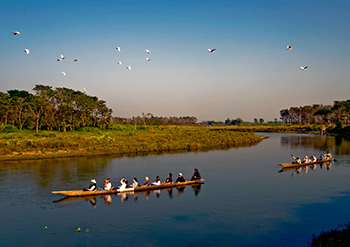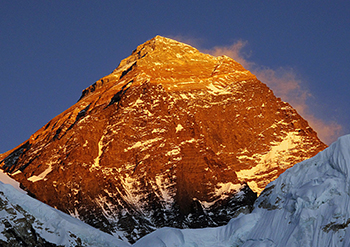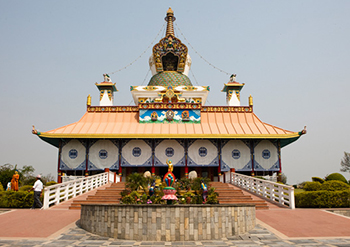Photo Friendly 7 days 6 Nights
Chitwan|Pokhara|Kathmandu
Get a Higher Perspective
The home of the Majestic Everest and the ever growing Western Himalayas, Nepal is an ancient society that has been living up the steep himalayan slopes of the Western Greater Himalayas for thousands of years. This is a place equally rich in culture, history and diversity as it is rich in Nature and scenery. A trip through Nepal means a trip through the bylanes of the Himalayan Metropolis of Kathmandu, it means visiting the Hundreds of years old Durbar Square at Bhaktapur, it means driving on some of the best Mountain Highways in Asia, it means chilling in the lakeside chill town of Pokhra while witnessing the Annapurna Range. A trip through Nepal means visiting Chitwan National Park, the home of the one horned Rhino and the Indian Bengal Tiger, it means witnessing a panoramic sunrise as well a sunset at Nagarkot. A trip to Nepal means hiking up the Annapurna circuit, reaching the Everest Basecamp and witnessing the himalayas from airplane through the Everest Flight. An underrated gem of South Asia, Nepal is a pocket friendly destination that is as good a place for nature lovers as any other in the world.
Things to Experience in Nepal:
- Jungle Safari in Chitwan National Park
- Paragliding at Pokhra
- Everest Base Camp Trek
- Annapurna Base Camp Trek
- Enjoy at the Thamel Area of Kathmandu
- Experience the history of the Nepalese Civilization at Kathmandu, Bhaktapur, Lumbini
In Summers:
- Trekking
- Paragliding
- River Rafting
- Ride / Drive
- Jungle Safari
In Winters:
- Skiing
- Wonderland
Other ways to reach Nepal:
- Flight to the Tribhuvan International Airport, Kathmandu (KTM)
- Nepal can also reached by land from India as it shares vast frontiers.
TRIP ITINERARY
The suitably designed itinerary that takes care of all your comforts and lets you have the best experience of the place. Remember this is just a provisional itinerary and we welcome any changes you want to make according to your needs.
-
Day 01:
Kathmandu - Chitwan
Receive at Kathmandu airport and drive to Chitwan (6 hrs.) Overnight in Chitwan. Chitwan is well known for the Chitwan national park and especially for the one horned rhinoceros. We can visit the Chitwan national park by sitting on the back of elephants. We can closely examine the wild animals and birds here. We can have a jungle safari at Chitwan national park. We can get a large portion of faunas and floras while visiting the Chitwan national park. Overnight in Chitwan.
-
Day 02:
Elephant Safari
Full day guided Jungle activities with Elephant Safari. All three meals included. Overnight in Chitwan. Elephant Safari : Seated high on the back of a trained elephant exploring the grasslands and core area of the park, you become an integral part of the life of the Chitwan National Park. The elephant safari, though not the most comfortable rides, is an amazing experience. And it doesn’t take long to spot at least a rhino in these forests. Overnight in Chitwan.
-
Day 03:
Chitwan - Pokhara
After breakfast drive to Pokhara (140 km / 5 hrs) – the valley of lakes & mountains. Overnight in Pokhara. Pokhara: The Pokhara Valley, a land of spectacular beauty crowned by the majestic Himalayas, conjures visions of calm but vibrant green hills. Loaded with luxuriant vegetation and dotted with shimmering lakes.
-
Day 04:
Sarangakot
Wake up early in the morning, transfer to Sarangakot for spectacular mountain views and sunrise, drive back to hotel , breakfast at hotel. Rest for a few hours , tour followed by halfday sightseeing covering Bindabasini temple, Gupteshwor Mahadev Cave, Seti River & Davis Fall. Boating on Phewa Lake. Afternoon exploring the valley. Overnight in Pokhara. Bindabasini temple: It is the hindu based religion temple which is built in a Pagoda style and the building is of white colour.It is also considered as the most popular temple and religious sites of Pokhara after Tal Barahi temple of Pokhara.It is situated at 3000 ft. above from the sea level surrounded by Machhapuchhre and Annapurna ranges. You can also enjoy the fabulous views of the city and the mountain ranges from the temple. The temple is dedicated to Goddess Durga which is also known as Shakti or Kali and many manifestations. Many hindu people come to this temple for worship, marriage ceremony, bratabandha etc. Gupteshwor Mahadev Cave : Gupteshwor is a 3 km long porous cavern underneath the main road of Chhorepatan. Divided into halves, the first half of the cave has a temple dedicated to Lord Shiva or Mahadev, some 40 meters from entrance. A recent addition is an artificial divide in the left corner where a life size replica of a cow-Mahadev’s faithful rideresides. You can pay a small fee to the Pujari there, who will then hand you a marble which when inserted into the slot on the cow’s back, performs a little miracle. The cow’s udder starts leaking milk, all cleverly orchestrated for the devotees. Taking pictures and videos in this first half are strictly prohibited. Seti River gorge: The Seti originates from the snow fields and glaciers around the twin peaks of Api and Nampa in the south facing slopes of the main Himalayas. The area is near the tri junction of the borders of Nepal, India, and China . The river first flows in a south-easterly direction, then turns and flows in a south-westerly and finally south-easterly again before joining the Karnali or Ghagra River. It has cut a spectacular gorge across the Mahabharat Range and appears to be lost amongst caves and tunnels for a short distance. Davis Fall: The water forms an underground tunnel after reaching the bottom. This tunnel is approximately 500 feet (150 m) long and runs 100 feet below ground level. It is an attraction for tourists and locals. Thousands of Nepalis visit for recreation and enjoyment. Visitors can try their luck on the luck pond constructed there by throwing and placing the coin on the statue of god. Likewise, one can find a model of a typical Nepali house and a series of statues of Nepali people wearing traditional dresses where visitors can click photos.
-
Day 05:
Kathmandu
After breakfast and drive back to Kathmandu via manakamana. Overnight at Kathmandu
-
Day 06:
Kathmandu Sightseeing
Full day sightseeing: AM: 1st half Pashupatinath temple, Boudhanath stupa. PM: 2nd half Kathmandu Durbar Square, Swayambhunath stupa. Overnight in Kathmandu. Pashupatinath: Situated 5 Kilometers east of Kathmandu city, Pashupatinath temple is one of the holiest Hindu temples dedicated To Lord Shiva. Situated amidst a lush green natural setting on the bank of the sacred Bagmati River, the temple built in pagoda style has gilded roof and richly carved silver doors. Visitors will be permitted to view the temple from the east bank of Rivers Bagmati, entrance in the temple being strictly forbidden to all non-Hindus. Pashupatinath is the center of annual pilgrimage on the day of Shivaratri which falls in the month of February / March. Behind the temples are the cremation grounds. Boudhanath: This Stupa, eight kilometers east of Kathmandu City is one of the biggest in the world of its kind. It stands with four pairs of eyes in the four cardinal direction keeping watch for righteous behavior and human prosperity. King Man Dev built this Buddhist stupa at the advice of Goddess Mani Jogini. It is built on an octagonal base inset with prayer wheels. Houses of Lamas ring the shrine or Buddhist priests. KathmanduDurbar Square: It is a complex of structure with the Royal Palace of the Malla kings and also of the Shah dynasty in the Durbar Square of central Kathmandu,Nepal. It is spread over five acres. The Hanuman Dhoka Palace gets its name from the stone image of Hanuman the Hindu monkey god, that sits near the main entryway.’Dhoka’ means door or gate in Nepali. Swayambhunath: Located approximately 4 km/2.5 miles, this Buddhist Stupa is said to be 2000 years old. The Stupa, which forms the main structure, is composed of a solid hemisphere of brick and earth supporting a lofty conical spire capped by a pinnacle of copper gilt. Painted on the four-sided base of the spire are the all-seeing eyes of Lord Buddha. This hill is a mosaic of small Chaityas and Pagodas temples.
-
Day 07:
Departure
After Breakfast, check out from the hotel and drive back to Kathmandu airport to reach well in time for your return flight.
- This is only a suggested itinerary, Any level of customisation is possible.
- Prices and availability at the time of booking may vary.
- Any additional alteration is possible at this time but not after confirmation.
- Booking will be non refundable and non changeable once confirmed.








